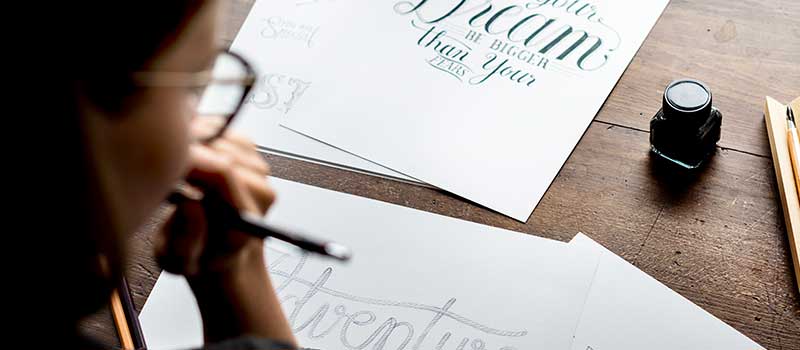Let’s face it… graphic designers are not thin on the ground today.
They’re pretty much everywhere and it’s not difficult to find somebody who’ll put together a logo for you.
You might find a senior designer and pay decent money and get a beautifully crafted logo.
You might go with a junior designer who may or may not do a decent job for you.
Or you might even go with some 17-year-old with a cracked version of Photoshop who will put together a logo if you don’t really care what it looks like.
The Significant Role Of The Brand Identity

Now the reality is this isn’t really branding, this is not what branding is.
It’s not just about going out and getting a logo.
The logo is only a very small part of the overall brand.
In fact, the logo is only a very small part of the brand identity system within the brand identity system. You have multiple elements, all working together within an ecosystem.
If you know what those elements are, you’re able to design those elements with some thinking involved, then you can design a brand identity system that will work towards influencing the mind of the audience.
Brand Identity Is Part Of The Brand Experience

Now the role of the brand identity system is to appeal visually and quickly assign meaning to the audience about what the brand is all about.
Visual appeal is at every single touchpoint throughout the brand. It’s part of…
The Website
Business Cards
Shop Front
Shop Design
Interior design
Collateral
Brochures
User Experience
Any kind of interaction that anyone might have visually with the brand….
If they can see and experience that brand visually that’s part of the identity system.
The identity system is part of the overall brand experience, which looks to influence and shape the mind of the audience about what the brand actually means.
PRO Brand Strategy BluePrint
Build Brands Like A Pro Brand Strategist

Brand Identity Elements

Now in order for a brand identity system to play its role effectively, then it needs to communicate certain characteristics.
Those characteristics are the key to determining within the brand strategy itself how the brand is going to appeal and resonate with that audience.
Those characteristics then influence the brand identity system and all of the elements within it.
I wanna show you 10 brand identity design elements that you need to consider within your strategic brands so that your brand identity designs can start playing the role that they’re supposed to be playing as part of an overall brand strategy.
Explore Brand Strategy
Programs & Tools
Element #1: Logo

The logo has been put on a pedestal in the last 15 to 20 years, and the word logo has become synonymous with the word brand.
A lot of people who don’t know too much about branding do believe that a logo is a brand, but those closer to the profession of branding or those closer to branding their own businesses know that a brand is much bigger than a logo.
The logo itself plays a really important role in appealing to who the audience is.
That appeal really solidifies how the brand is going to be experienced and sets the tone for how the brand is going to be experienced right throughout the customer journey.
Element #2: Typography

Typography plays a really important role in setting the style of the brand and comes with its own predefined characteristics.
Now unless of course, you are creating a custom font from scratch then you can design the characteristics into that font.
For the most part, when you’re designing a brand identity, you’re using preexisting fonts and it’s really a case of strategic alignment.
Aligning with the characteristics that have been predetermined within the brand strategy.
So it’s a case of matching, like for like defining what those characteristics are and going out and finding a font that displays those characteristics, so it fits seamlessly into the brand identity system.
Element #3: Colour Palette

While typography sets the style for the brand identity, the color palette really sets the mood.
Color has the ability to influence our mood and that’s because we have a primitive relationship with color and that’s because of our relationship with nature.
We assign meaning to things based on their color because we associate that with that color so we know that water is cool, and we know that fire is hot.
There are some psychological connotations when it comes to color and it’s really important that you use that wisely.
Use that strategically when selecting a color palette for your brand identity system
Element #4: Patterns

Patterns can be used very effectively throughout a brand identity system, and they can be used in a variety of different environments.
They do provide a bit of texture, they allow you to fill blank spaces and they can be used throughout the brand experience as a whole.
If you think about department stores or certain types of high street brands that put their patterns onto their bags or onto their packaging.
Then when you see somebody walking down the street with those bags when you see the pattern, you don’t necessarily see the logo and you remember you recall that brand.
They are a very effective and very flexible tool for brands to use throughout the brand identity system and using that throughout the brand experience can be very effective in helping your audience to recall yours.
Element #5: Image And Photography Style

Imagery is a very good way to engage your audience because it does have the ability to set the mood and set the tone and evoke an emotion.
The right image in the right place at the right time can really evoke the emotions of your audience.
Now, of course, if you have a big budget, you can go out and get yourself a photographer to create a completely new image style for your brand.
Even without a big budget, the right designer can help you to come up with an image style that is aligned with your brand strategy and is aligned with the characteristics and emotions that you want your audience to feel.
Really think about what emotions you want your audience to feel, what characteristics you want to be aligned with your brand, and then make sure they are designed into your photography or image style brand identity element
Element #6: Graphics & Iconography
These are probably one of the most flexible tools within the brand identity system because you can use them pretty much anywhere from your website to your packaging, to graphics on the wayfinding, within a building.
Whether the visual engagement is a place where you can use graphics or iconography and again, this all contributes to the overall brand experience.
If you’re in a building and you see a sign that has a generic icon on there telling you where to go, then it’s less effective, It’s less cohesive than an icon that is part of an overall brand identity system.
Really getting down into attention to detail and really going down to the deepest level in terms of making sure that the consistency is there, that the brand experience is cohesive and it’s absolutely everywhere on every single touchpoint brand identity element.
Element #7: Illustrations

Illustrations are not for every brand and you tend to have brands that will either go with a unique image style or a unique illustration style.
You don’t have many brands that will go with both that’s not to say it doesn’t happen, but it tends to be either a unique image style or an illustration style.
Now, this has been a growing trend, certainly within the tech sector over the last five years or so having a unique illustration style but it’s not.
As I said, for every brand, you really need to consider what image your audience should have about your brand and if illustrations with that image then by all means use illustrations within your brand identity design.
Consider who the audience is, consider the image that you want to own in their mind and use that when deciding whether or not illustrations are for your brand identity system brand identity element.
Element #8: Grid Styles

Grid style allows you to have consistency in the information that you’re displaying across all touchpoints.
If you think some modern brands today have upwards of 100 touchpoints and every single touchpoint has different kinds of information and if there is no cohesiveness, if there’s no consistency to how the information is displayed, then it can seem a little bit haphazard.
So a grid style will help with that consistency.
It will help will with that information flow and again, just add to the brand experience and the consistency of that brand experience.
Element #9: Audio

Audio is becoming increasingly important because we are experiencing brands in different ways.
Today, we’re experiencing brands more audibly today than we ever have before, brands have podcasts, YouTube channels, and Videos on their website.
If you look at Google trends and the increase of search through voice you can see where it’s all going, you can see the number of devices that are coming out now that will allow us to experience brands audibly.
This is becoming increasingly important and It’s only going to get more and more important.
It’s important as well that you consider your strategy when deciding how to use audio within your brand identity system within your brand experience
Really think about what experience you want your audience to have, and what image they want to have of your brand to make sure that your audio is aligned with those characteristics and with those images.
If you want your brand’s experience to be fun and happy and bright, then your audio should align with those feelings.
Again, think strategically about who the audience is and the image that you want to have in their mind and make sure that you use that strategically within your decision.
Element #10: Motion/Animation

Now again, this comes back to the evolution of brands and the evolution of our experiences with brands.
Brands are evolving and we are experiencing brands in many different ways and if you think about how we might engage with a brand through their app or through their website or through an interactive billboard.
There are many opportunities for a brand to have animations in there to add to the overall brand experience.
You might have an animated logo at the beginning of your video, or you might have animated characters throughout some kind of interactive experience, but again, this all plays into the overall brand experience and that cohesiveness and that consistency.
So thinking about the experience that you want your audience to the image you want them to have of your brand and using that with motion and animation throughout that brand experience
Over To You
Now, I don’t know how many times I use the word brand experience throughout that video, but that is the crooks of the message here.
Every single brand identity element within your brand identity system is part of an ecosystem that works toward that brand experience and the brand identity itself plays a dovetail role with the brand strategy.
The brand strategy adds to that overall brand experience and both work together as a team to provide that experience to the audience and shape their mind about what the brand should mean.
On-Demand Digital Program
Brand Master Secrets
Make the transition from hired-gun to highly valued brand strategist in less than 30 days. The systems, frameworks and tools inside this comprehensive program are all you need to level up.







